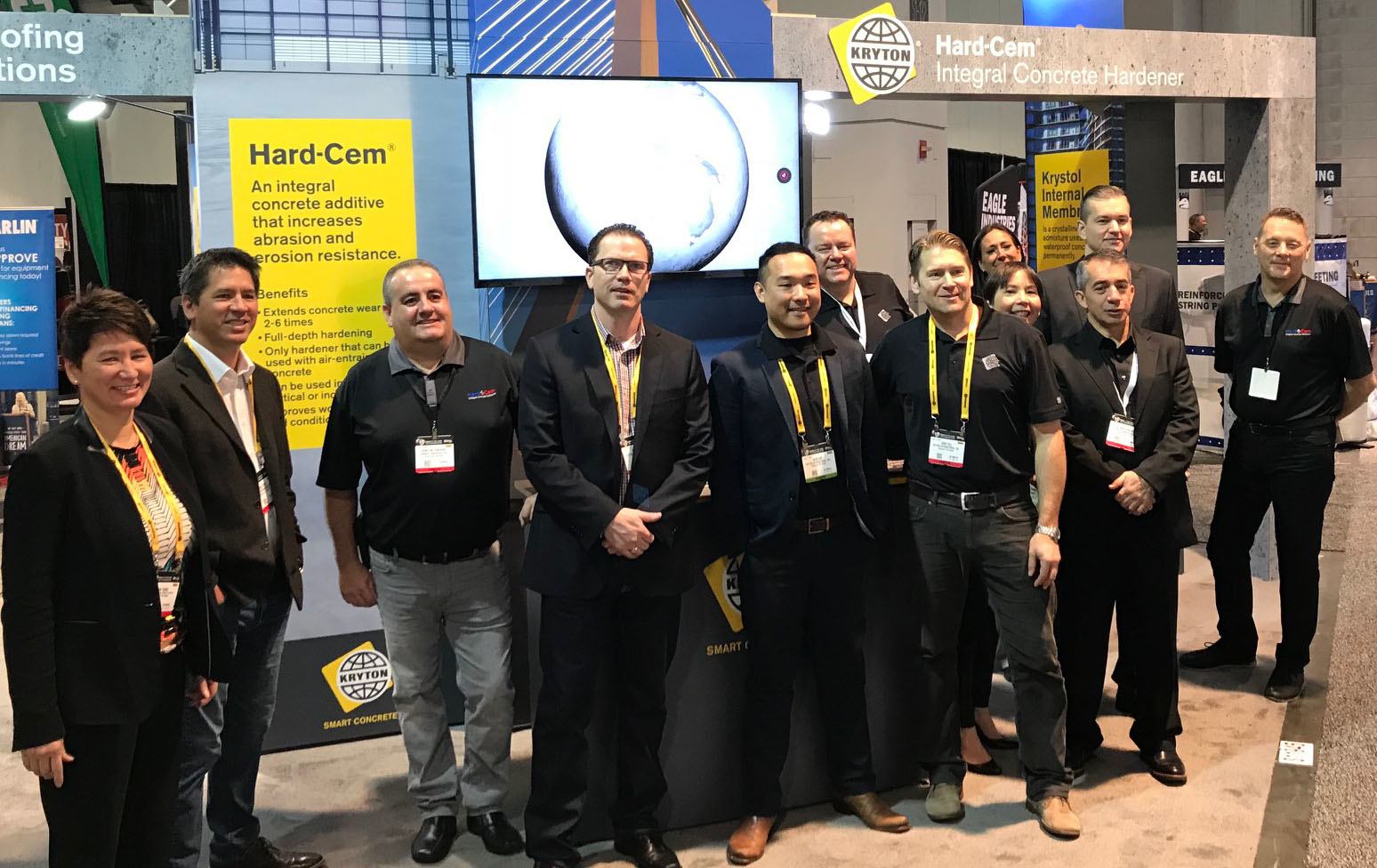1. How does Krystol Internal Membrane™ (KIM®) work?
KIM contains Krystol technology. When added to concrete, Krystol chemically reacts with water and un-hydrated cement particles to form insoluble needle-shaped crystals that fill capillary pores and micro-cracks in the concrete. This blocks the pathways for water and waterborne contaminants. Any moisture introduced over the lifespan of the concrete will initiate crystallization, ensuring permanent waterproofing protection.
2. What is Hard-Cem®?
Hard-Cem is an Integral Hardening Admixture used to increase abrasion and erosion resistance of concrete.
Hard-Cem is added to the concrete at the time of batching to increase the hardness of the concrete and expand concrete wear life. It outperforms and overcomes deficiencies of labor-intensive surface applied hardeners, and can be used to enhance durability of both air-entrained and non-air-entrained concretes. Since it is integral, Hard-Cem can be used to harden horizontal, vertical or inclined concrete as well as shotcrete surfaces.
3. How does Hard-Cem compare against Dry-Shake Hardeners?
Hard-Cem provides superior value and performance that surpasses traditional surface applied hardeners.
It offers best-in-class abrasion and erosion resistance, while removing risks associated with installation. Installation limitations associated with Dry-Shake Harderners such as the numerous steps, waiting for required weather conditions, working with mix designs containing air entrained concrete and achieving consistent coverage/dosage is a thing of the past. Hard-Cem has the additional benefit of eliminating job-site wide exposure to harmful silica dust, which is known to cause lung disease. Hard-Cem goes where traditional dry-shake hardeners can’t: shotcrete, vertical cast-in-place, pre-cast concrete and vertical concrete. Hard-Cem shortens construction schedules, saves money, has more applications and offers improved hardening performance.
4. How is KIM different than competitors?
The patented Krystol technology inside KIM is chemically unique and causes a different chemical reaction than our competitor’s. Krystol technology reacts with water and un-hydrated cement particles to form needle-shaped crystals. These crystals grow and interlock inside capillaries and pores within concrete effectively stopping the flow of water. KIM is a superior performing admixture that has the highest level of permeability reduction and most dependable self-sealing performance. Upon introduction of water through any new cracks in the concrete, the Krystol chemical reaction starts again and new needle-shaped crystals form to seal the leak. It provides the best shrinkage and restrained shrinkage cracking reduction and is proven to protect against corrosion.
Only Kryton offers a complete waterproofing system that covers every construction detail including joints. Kryton is the inventor of the crystalline waterproofing admixture and we have the most experience waterproofing high-risk projects.
5. How do you sell the products?
Kryton has over 50 global distributors who carry our products and sell to end users. Our admixtures KIM and Hard-Cem can be purchased directly through local ready-mix concrete producers in many regions. To find the distributor in your region click here.
6. How does KIM effect durability?
KIM greatly improves the durability of concrete ensuring structures have extended longevity. It effectively and reliably lowers the permeability of concrete and self-seals micro-cracks for the life of the structure. By preventing the transmission of water through concrete, KIM eliminates the factors that cause early concrete destruction such as chemical attack and corrosion of reinforcing steel.
A 10-year Corrosion Study by University of Hawaii resulted in the recommendation of KIM.
A long-term corrosion study was conducted to evaluate the durability of 22 reinforced concrete specimens, all containing various pozzolans and chemical admixtures. Test panels were exposed to a marine environment in the tidal zone in Honolulu Harbor from 2002-2012. Panels were monitored for half-cell potential, chloride concentrations, cracking and visible signs of corrosion.
Key Findings:
- The panel using Krystol Internal Membrane (KIM) at a dosage of 2% had low half-cell readings and no visible signs of corrosion
- KIM significantly outperformed other permeability reducing admixtures & corrosion inhibitors






